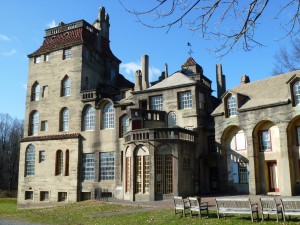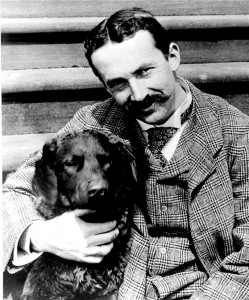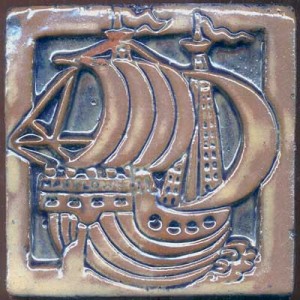
Fonthill Castle, in Doylestown, Pennsylvania, is rarely included among the great country houses of the Gilded Age. This extraordinary house is not designed by an architect, it does not follow one of the accepted styles of the period, and it is just, well, too weird. I can’t think of an American country house that looks like a fortified manor house, not even San Simeon—the closest is Sir Edwin Lutyens’s Castle Drogo in Devon. Fonthill was designed and built between 1908 and 1912 by Henry Chapman Mercer. Like many country-house builders, he used reinforced concrete (cheap and fireproof), but unlike them he used it not only for the walls, but for everything: floors, beams, columns, arches, domes, vaults, roofing, window mullions, even built-in furniture—bookshelves, storage cabinets, and window seats are all concrete. He exploited the plasticity of the material and the result is a curious combination of Antonio Gaudí and the Addams Family. Like his contemporary Gaudí, Mercer (1856-1930) combined concrete with ceramics, made in his own Moravian Pottery and Tile Works (the factory, which resembles a medieval abbey, stands behind the castle). Mercer tiles, inspired by William Morris, were nationally distributed and enliven such buildings as Isabella Stewart Gardner’s Fenway Court and the state capitol in Harrisburg. An Arts and Crafts sensibility permeates Fonthill. The walls, floors and ceilings of the 44 rooms are adorned with tiles and mosaics, and contains his collection of pottery, books, prints, and curios. Well worth a visit; call ahead to confirm times.

Henry Mercer with Rollo

Mercer tile

